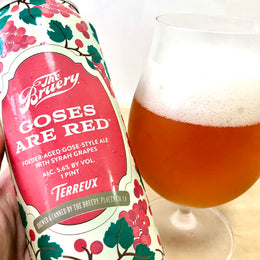
Singha (or "Sing", which is how locals actually call it) is the grand-daddy of Thai beers as we've mentioned. It kick started what was previously a non-existent industry in Thailand. Its roots are touted to be European which served as the basis to Boon Rawd's brewery, producing a 100% barley malt beer that is designed to have a rich body and creamy, malty flavors. Of the Big Three, it is the most pricey (by a bit).
The name Singha comes from the Sanskrit word "Singh" which translates to "Lion", hence the golden lion emblem representing the brand. In several South Asian folklores, from Hindu to Indonesian and Thai, the Singha is a powerful mythological creature that represents benevolence and protection.


The Singha is a mythological creature that symbolises protection and benevolence, which you'll not only find on Singha's beers but also all around South Asia.
Above the conspicuous golden lion, you'll also see on every beer and can a royal warrant, called the Garuda. When it first popped on the scene in the 1930's, it was so enjoyed that it became officially endorsed by the Thai King Rama VIII, which is why you'll see a royal Garuda at the top of ever can or bottle. It signifies the high esteem in which the brand is accorded recognition of its quality. Boon Rawd is the only Thai brewery to hold the Garuda.
Singha's desire to maintain this quality has meant that all Singha beers are brewed in Thailand for quality control and is not produced anywhere else, whether by Boon Rawd or a contract manufacturer. This is as Boon Rawd claims that the 100% artesian water used can only be found at its brewery - you might think this is marketing fluff, but hopheads will quote you many instances where a brewery changes location and somehow loses its taste. In fact, Boon Rawd at one point had attempted to use breweries in Europe but ultimately decided that its lagers were best made in Thailand.
So as they say, "if it ain't broke, don't fix it!". Aside from 100% barley malt, that artesian water, it also uses three kinds of European hops.

Tasting Note
Color: Gold
Aroma: Noticeably more hefty and malty, with richer honeyed, it is smoother and silkier, more creamy - think caramel creme.
Taste: Heftier, again. On first sip it is more well-balanced. Each sip is rounded with natural honey, caramel, cereal, and then of course a more zesty vibrance of grapefruit rinds and then a herbaceous hoppy bitterness. This isn't particularly sweet, rather a more gentle sweetness but overall a rounded maltose candy sort of profile. It is richer and darker, with a deeper spearmint menthol freshness.
Finish: Clean, but the richness of the malt comes through. It is again darker with natural honey.

My Thoughts
👍👍👍
Singha isn't particularly sweet and shines through with how rich it feels. It has a strong biscuit-y malty flavor that gives it alot of heft and a silky, creamy texture. It's altogether rounded and well-balanced between sweet and bitter, neither being too overpowering. If you're someone who is wary of strong hoppy beers, Singha has got your back - it's neither too sweet nor bitter, with a generally appealing honeyed maltiness and an extremely appealing creamy texture.
Our Thai friends told us at the end of our tasting that Singha was by far their favorite - in fact they weren't even aware that they both liked Singha and had to announce it at the same time by way of a simultaneous fingerpointing at their favorite beer of the three. They also told us that locally, Singha is still the top hit.

@111hotpot







